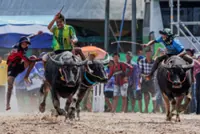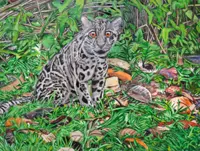Close-up of Kat Corrigan’s painting for her art project. Photo: TNS
As Kat Corrigan sat at her dining room table, painting a canvas, one dog rested at her feet. The family Pug passed through, giving a snort. Then a cat, named Fatoosh, hopped onto the table, nuzzling Corrigan’s left hand.
Creatures had found their way onto her canvas, too. On this morning, Corrigan was painting a cat.
Already a subscriber? Log in
Save 30% OFF The Star Digital Access
Cancel anytime. Ad-free. Unlimited access with perks.





